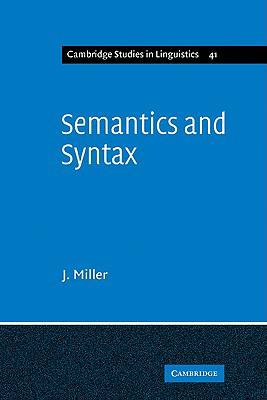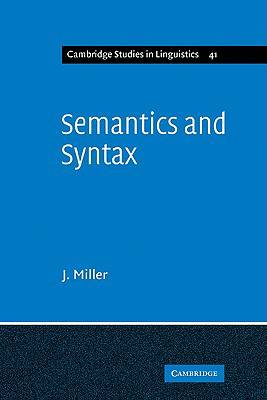
Je cadeautjes zeker op tijd in huis hebben voor de feestdagen? Kom langs in onze winkels en vind het perfecte geschenk!
- Afhalen na 1 uur in een winkel met voorraad
- Gratis thuislevering in België vanaf € 30
- Ruim aanbod met 7 miljoen producten
Je cadeautjes zeker op tijd in huis hebben voor de feestdagen? Kom langs in onze winkels en vind het perfecte geschenk!
- Afhalen na 1 uur in een winkel met voorraad
- Gratis thuislevering in België vanaf € 30
- Ruim aanbod met 7 miljoen producten
Zoeken
Omschrijving
This book is concerned with the relationship between semantics and surface structure and in particular with the way in which each is mapped into the other. Jim Miller argues that semantic and syntactic structure require different representations and that semantic structure is far more complex than many analysts realise. He argues further that semantic structure should be based on notions of location and movement. The need for a semantic component of greater complexity is demonstrated by an examination of prepositions, particles, adverbs and verb-prefixes, and is shown to accord with cross-language and historical facts. The volume goes on to consider the sort of rules that are required to map semantic structures onto syntax. Semantics and Syntax tackles fundamental issues and draws together many of the key concepts of traditional grammar and formal linguistics. The general framework for handling syntax, semantics and morphology that it outlines is perhaps a controversial one, but it will be recognized as challenging and original.
Specificaties
Betrokkenen
- Auteur(s):
- Uitgeverij:
Inhoud
- Aantal bladzijden:
- 272
- Taal:
- Engels
- Reeks:
- Reeksnummer:
- nr. 41
Eigenschappen
- Productcode (EAN):
- 9780521108294
- Verschijningsdatum:
- 9/04/2009
- Uitvoering:
- Paperback
- Formaat:
- Trade paperback (VS)
- Afmetingen:
- 152 mm x 229 mm
- Gewicht:
- 403 g

Alleen bij Standaard Boekhandel
+ 129 punten op je klantenkaart van Standaard Boekhandel
Beoordelingen
We publiceren alleen reviews die voldoen aan de voorwaarden voor reviews. Bekijk onze voorwaarden voor reviews.









